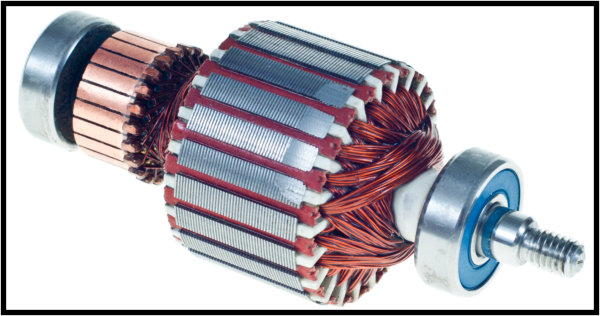 |
 |
Induction Motors
In a large industrial facility, over 98% of the electric motors are likely to be of induction motor design. Generally induction motors are:
a. Relatively inexpensive
b. Rugged
c. Require relatively inexpensive maintenance
In an induction motor, the stator and rotor are equipped with embeded conductor coils. Such induction motors are referred to as wound-rotor induction motors. In such motors the stator windings are supplied with ac power. The rotor windings are not supplied with any external power. The stator winding induces a voltage in the rotor windings. This way we get two sets of magnetic fields which interact to produce rotation in the rotor.
The magnetic field in the stator rotates in a physical sense - as it does so it locks into the rotor magnetic field and drags it along - thus creating a rotational motion in the rotor.
The rotational speed of the rotor is almost constant. Under increased load conditions it drops slightly to a lower value. If a motor is mechanically overloaded, it will draw excessive current which causes its coils to heat up. Under severe overload conditions, overheating of coils damages the coil insulation. This is known as a motor "burnout."